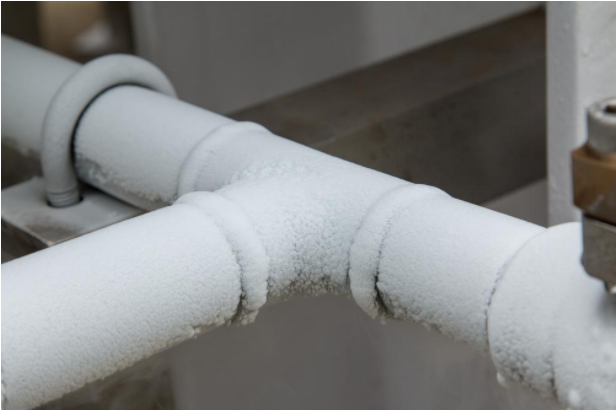When your pipes freeze during the winter, it can be very inconvenient – and if they explode, it can also be extremely expensive to repair them. According to CostHelper, the cost of repairs due to burst pipes can run anywhere from $5,000-$7,000. That’s quite a pretty penny!
Obviously, the best way to deal with frozen pipes in the winter is to ensure that they don’t freeze at all. Here are some simple steps from a plumbing and heating Winnipeg company, that you can take to avoid frozen pipes – and a potentially enormous repair bill!

- Leave The Heat On – Even When You’re Gone
If the temperatures are regularly dipping below freezing at night, and staying there for most of the day, you should leave the heat on – even if you’re going on a vacation. You don’t have to keep the heat on as high as you normally would. Usually, you’ll want to keep it above 50 degrees Fahrenheit.
While it may seem wasteful to leave your heat on when you’re not at home, think about the cost of heating your home for a bit longer – compared to the price of repairing burst pipes!
- Let Your Faucets Drip
If you’re concerned about a particular pipe freezing, keep a faucet turned on to drip slightly. This helps relieve the pressure within your plumbing. This pressure buildup is what causes pipes to burst when they freeze – so relieving it prevents bursting!
Again, you may not like the idea of wasting a bit of water in the winter, but just think about the cost of a few more gallons of water compared to a frozen pipe, and you’ll be able to live with it!
- Keep Interior Doors Open
If you have pipes that are located inside cabinets or storage closets, consider keeping their interior doors open. This helps distribute heat more evenly throughout your home, and ensures your pipes are kept warm.
- Seal Up Cracks And Holes Near Pipes
If you have any cracks or holes near your pipes – in either interior or exterior walls – seal them up with caulk. Caulking these imperfections helps keep cold air out, and warm air in. This will help prevent your pipes from freezing – not to mention reduce your heating bills!
- Consider Heating Tape
If you live in an especially cold climate, or are very concerned about a particular pipe bursting, heating tape can be used to keep your pipes warm.
Heating tape is exactly what it sounds like – it’s applied directly to your pipes, adhering to them. Using electrical filaments, similar to a space heater or electric blanket, heating tape delivers warmth directly to the pipe in question.
Care should be taken when using these products. Though some heating tape is available that automatically-detects when it needs to be turned on, they can be dangerous – and, like space heaters, should not be left unattended for prolonged periods of time.
- Bulk Up With More Insulation
If your home is poorly insulated, you have a much higher risk of a pipe bursting. Pipes in basements and attics are commonly exposed to very low temperatures due to insufficient insulation – but pipes anywhere in your home can freeze if they’re poorly insulated.
To avoid this, we recommend adding additional insulation to walls, floors, and ceilings to keep your home warmer. This has the added benefit of reducing your power/gas bills – saving you even more money!
You can also add more insulation directly to your pipes, using fiberglass or foam “sleeves” that wrap around and cover them, protecting them from exposure.
Avoid Burst Pipes This Winter – Follow These Tips!
Burst pipes are a catastrophic disaster for any homeowner. However, the risk of having a burst pipe is very real, especially if you live a cold climate where temperatures stay freezing throughout most of the winter.
But don’t worry. With just a bit of care, insulation, and some simple preventative measures, you won’t have to worry about frozen pipes ever again! So avoid expensive repair bills – and use these 6 tips to ensure that you keep your pipes safe, warm, and flowing properly this winter!



